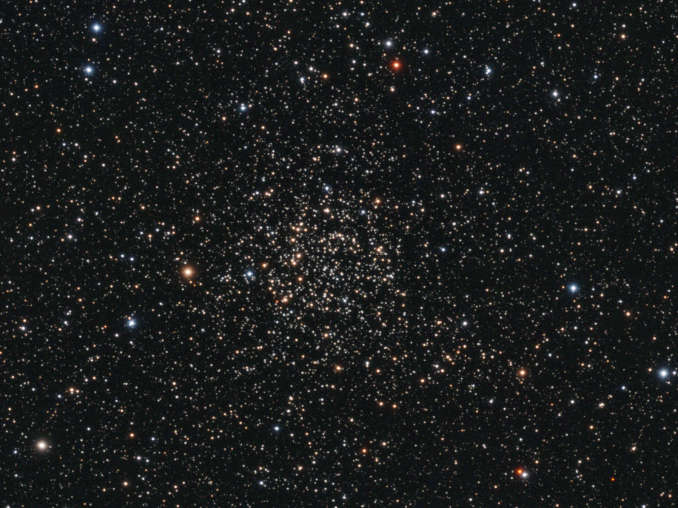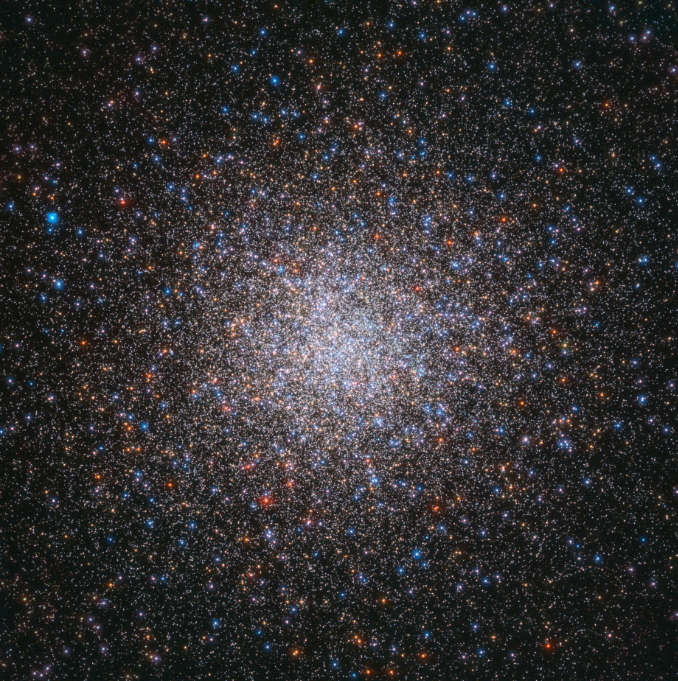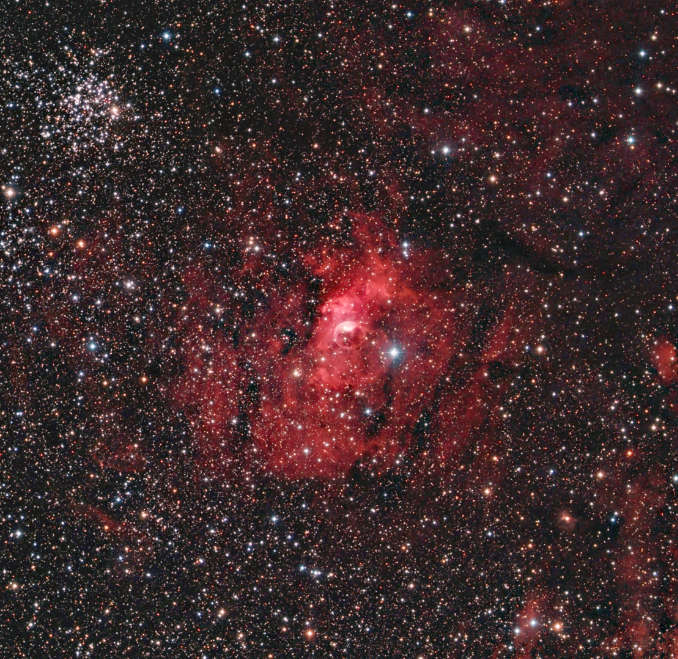With autumn beckoning, our lengthening nights will thankfully soon be blessed again with twilight-free skies. Provided you’re observing from a site free from major light-pollution, you’ll enjoy getting reacquainted with the multitude of deep-sky delights that are on show now and throughout the autumn.
Here’s five great targets to get you in the mood, whether you’re armed with humble binoculars, a small, medium or large telescope or a sophisticated imaging rig.
Kemble’s Cascade: a great binocular asterism
The night sky can be enjoyed through a humble pair of grab and go 10 x 50 binoculars, which show some of the best sights the deep sky has to offer.
Observing the night sky should be fun. Tracking down and observing asterisms, which are unofficial, chance alignments of physically unrelated stars outside of the recognised constellations, is a great way to show the night sky to youngsters and for seasoned deep-sky observers to take a break from straining their eyes for meagre photons.
One of the best asterisms for binocular observers is Kemble’s Cascade, which is located in the constellation of Camelopardalis, the giraffe. The Cascade is a virtually straight line of 17 white, seventh- and eighth-magnitude stars running north-west to south-east for about 2.5 degrees (about half the field of view of 10 x50 binoculars). About midway along the line is fifth-magnitude SAO 12969 (HIP 18505; RA 03h 57.4m, Dec +63° 04.3’).
Kemble’s Cascade is not too difficult to find as you can use Cassiopeia’s bright ‘W’ asterism as a guide; find Caph (beta Cas) and Segin (epsilon Cas), the stars which are located at either end of the asterism, and extend an imaginary line through them (~13 degrees long) by the same distance again to the east.
A welcome bonus is the presence of the small open cluster NGC 1502, which lies at the south-eastern end of the Cascade and can be detected in large binoculars.

Open cluster NGC 7789: Scent Caroline’s Rose
A pair of binoculars will show you a good deal for sure, but a small telescope’s much greater light grasp and resolution can reveal so much more.
Cassiopeia is arguably autumn’s signature constellation. Riding high at late evening it is open cluster heaven, hosting half a dozen or more tempting targets. Perhaps the prettiest of the bunch is NGC 7789, a relatively old and rich cluster that was discovered in 1783 by the great Caroline Herschel (1750–1848) and today is touchingly named Caroline’s Rose in her honour.
Shining with an integrated magnitude of +6.7, a pair of 10 x 50 binoculars easily shows it as a grey haze, even under suburban skies located between fifth-magnitude rho (ρ) and sigma (σ) Cassiopeiae. NGC 7789 is a great sight through any telescope; a small telescope, say in the 80–100mm (~three- to four-inch) class, can reveal around 40 to 50 of the cluster’s individual stars.

Globular Messier 2: Bright and compact
Messier 2 (NGC 7089) in Aquarius is arguably the finest globular cluster of the early-Autumn sky, with Messier 15 in Pegasus its only serious rival.
Aquarius, the water bearer, is a large constellation that lies almost entirely south of the celestial equator, though fortuitously Messier 2 lies almost slap bang on the celestial equator. Sweeping with a pair of binoculars on a transparent, moonless night five degrees north of third-magnitude Sadalsuud (beta [β] Aquarii) should lead you to a misty patch of light.
Messier 2 is one of the most compact globular clusters in the entire sky, which makes it hard for a small telescope to pick out (resolve) its individual stars. This is a task more appropriate for a telescope of at least 200mm (eight-inches) in size, which can partially resolve Messier 2’s outlying stars. However, it will need the greater resolving power of a 300mm (12-inch) ‘scope and high magnification to see stars all the way to the core.
Once you’ve observed Messier 2, why not set off north by some 13 degrees to observe Messier 15 in neighbouring Pegasus (it lies four degrees north-west of magnitude +2.4 Enif (epsilon [ε] Pegasi). Which is cluster do you think is superior?

It’s a challenge keeping up with the Jones’
The Great Square of Pegasus is a familiar sight during the autumn months. In early autumn it is well placed in the south by late evening.
Though Pegasus deals principally in galaxies, it does host a couple of planetary nebulae, including a large-‘scope challenge named Jones 1 (PK 104.2-29.6) discovered by (in 1941) and named for Rebecca Jones of Harvard University. She also co-discovered Jones–Emberson 1 (the Headphones Nebula) in Lynx, another faint planetary nebula not to be confused with Jones 1.
Jones 1 lies in the far north of Pegasus, a few degrees north of the mid-point between magnitude +2.4 Scheat (beta Pegasi) and magnitude +2.1 Alpheratz (alpha Andromedae).
Jones 1 shines at magnitude +12.1 and spans around 5.3 arcminutes across its roughly circular form. It’s an extremely challenging visual target that on most occasions requires the light grasp of around a 400mm (16-inch) telescope, with the addition of an O-III or UHC filter, to find it. Deep images show it appears as a broken ring that’s open to the north-west and sports brighter areas on its north-eastern and south-western rim.

Messier and a Bubble
Deep-sky imagers are spoilt for choice when it comes to choosing exotic autumn targets. If you like getting your money’s worth by getting two for the price of one then head for Cassiopeia and the great pairing of Messier 52 (NGC 7654), a fine open cluster, and the Bubble Nebula (NGC 7635), an amazing spherical nebula (15’ x 8’) which is being formed by fierce winds from an extremely hot and massive star class-O star.
The pair lie half a degree apart in the far western reaches of Cassiopeia, some six degrees west-north-west of Caph (beta Cas). This superb combination will appeal especially to wide-field imagers and those who dabble in making mosaics. Alternatively, both Messier 52 and the Bubble yield superb images in their own right.
One you’re done here collecting all the data you need why not slew eastwards to the other side of Cassiopeia at a location about five degrees east of Segin (epsilon Cas). Here you’ll find a marvellous close-lying pair of large emission nebulae soberly designated IC 1805 and IC 1848, though very well known to imagers as the Heart and Soul nebulae.

